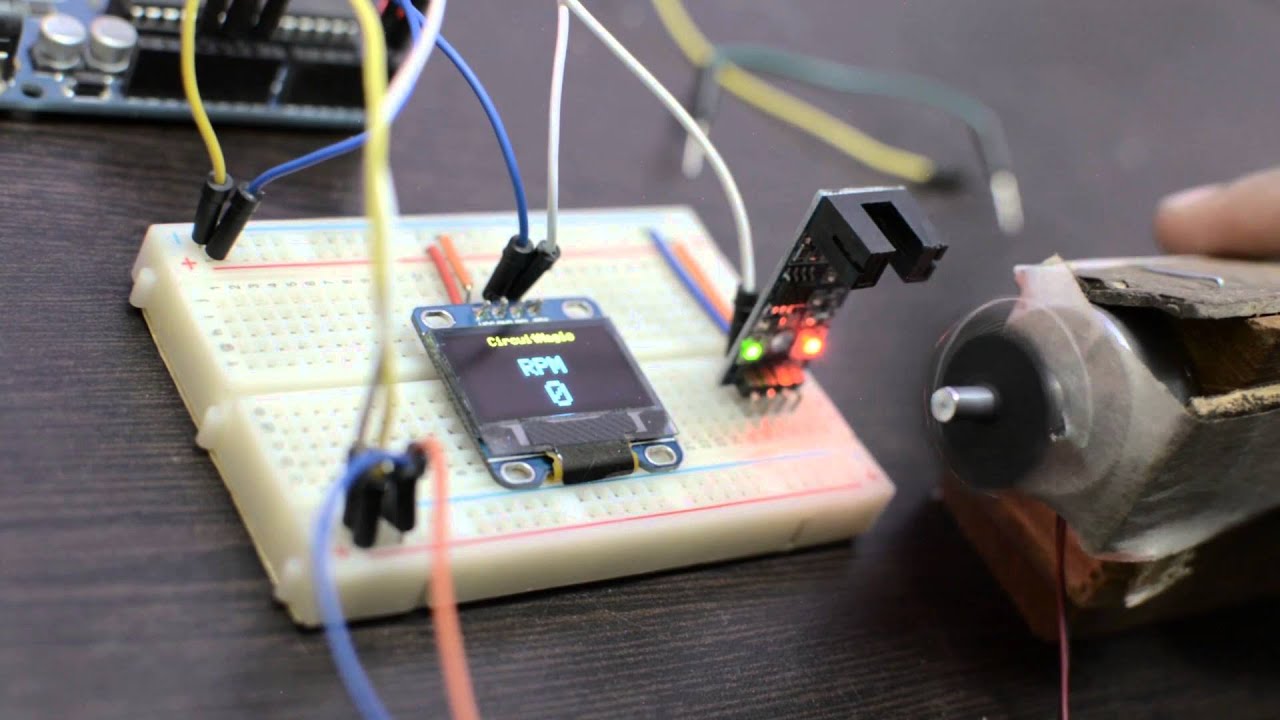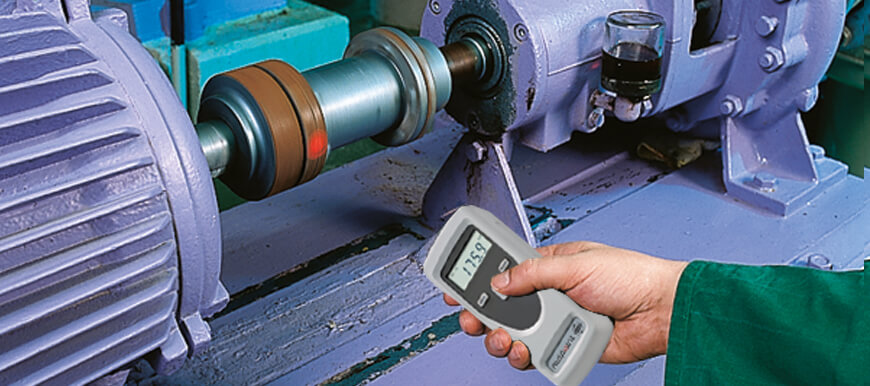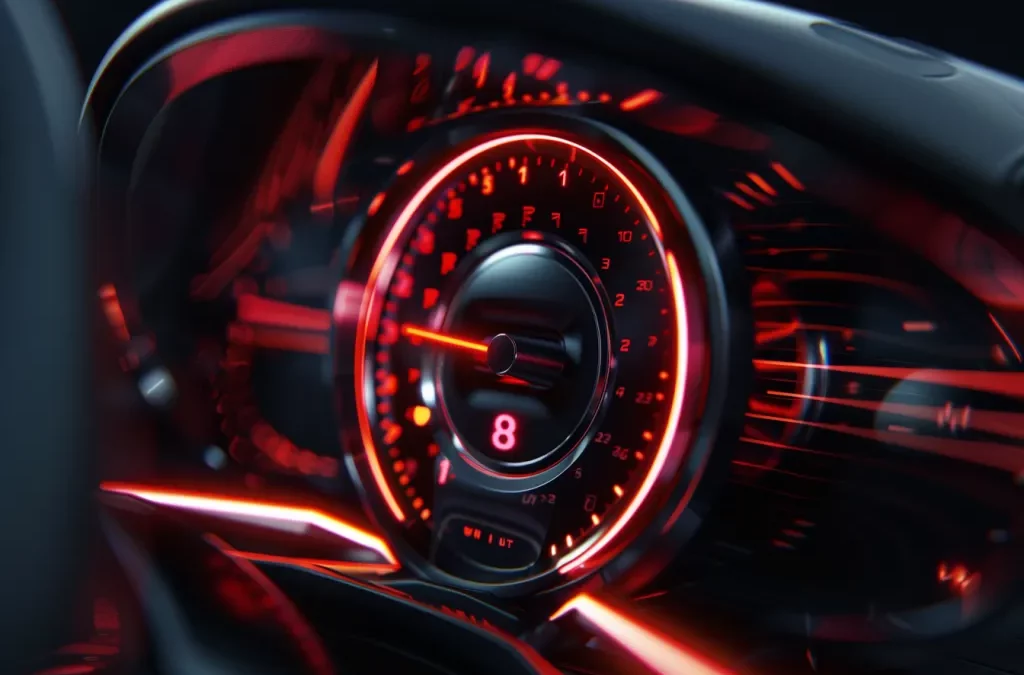Are you intrigued by the inner workings of diesel engines? One fascinating component that plays a crucial role in these engines is the tachometer. Understanding how a tachometer works on a diesel engine can provide deeper insights into engine performance and maintenance.
In this article, we’ll dive into the mechanisms behind the tachometer, focusing on its application in diesel engines. Our goal is to give you a comprehensive overview, seamlessly blending the technical aspects with practical insights. So, let’s get started!

What is a Tachometer?
A tachometer is an instrument that measures the rotation speed of a shaft or disk in an engine. It essentially tells you how fast the engine is running, measured in revolutions per minute (RPM). In diesel engines, maintaining optimal RPM is crucial for efficiency and performance.
Learn more about the fundamental aspects via this external link.
History of the Tachometer
The idea of measuring rotational speed dates back to ancient Greece, but the modern tachometer has evolved significantly. Initially developed for steam engines, it has now become a staple in any combustion engine, including diesel.
Why is a Tachometer Important in Diesel Engines?
Operating diesel engines within their optimal RPM range ensures both efficiency and longevity. A tachometer provides real-time feedback, helping operators avoid conditions that could cause excessive wear or even catastrophic failure.
For high-speed inspections and monitoring, monitoring discussions could be relevant.
Performance Monitoring
When engines perform at appropriate RPMs, fuel efficiency improves and emissions are reduced. In industrial applications, this translates into better productivity and lower operational costs. Visit our application inspection page to learn more.
Preventive Maintenance
A consistent monitoring system, like a tachometer, will alert you to anomalies. Knowing how does a tachometer work on a diesel engine can prevent minor issues from becoming costly repairs.
Types of Tachometers in Diesel Engines
There are different types of tachometers used in diesel engines, including:
Analog Tachometers
Analog tachometers utilize a needle and dial to display RPM. They are reliable and have been used for decades.
Digital Tachometers
Digital tachometers provide a numeric RPM readout. They are more accurate and are often integrated with other electronic systems.
Contact vs. Non-Contact Tachometers
Contact tachometers require physical contact with the rotating part, while non-contact ones use laser or optical methods. Both have their advantages, depending on the application.
For high-speed manufacturing, visit our manufacturing inspection page.
How Tachometers are Integrated into Diesel Engines
The integration of a tachometer into a diesel engine involves several steps, starting from the sensor installation to the display unit configuration.
Sensor Placement
The choice of sensor is critical. Common types include magnetic and optical sensors, each suited for different environments.
Data Transmission
In modern diesel engines, data collected by the tachometer sensor is transmitted electronically to a central processing unit for analysis.
Display and Alerts
Finally, the RPM data is displayed on the dashboard. Advanced systems will even provide alerts if the RPM exceeds safe limits.
Understanding RPM Readings
RPM readings can tell you a lot about engine conditions. Here’s how to interpret them:
Idle RPM
An idle diesel engine typically runs between 600 and 1000 RPM. If it’s significantly higher or lower, it could indicate issues.
Optimal Operating RPM
The optimal range varies between engines, but it’s commonly between 1500 and 3000 RPM. Operating within this range ensures efficiency.
Danger Zones
RPM readings in the red zone indicate potential danger. Consistently high readings can lead to severe engine damage.
For more insights, check out this informative tachometer article.
Applications of Tachometers in Diesel Engines
Tachometers are vital in various applications, from transportation to industrial machinery.
Automotive Industry
In cars and trucks, tachometers help drivers maintain optimal RPM for fuel efficiency and performance.
Agricultural Machinery
Tractors and other farm machinery rely on tachometers for optimal RPM, ensuring that the equipment operates efficiently.
Manufacturing Sector
Industrial diesel engines often equip tachometers to maintain consistent performance in manufacturing plants.
Future Trends in Tachometers
The future of tachometers in diesel engines is bright, with technological advancements paving the way for more precise and smarter systems.
Integration with IoT
Internet of Things (IoT) integration will allow for real-time monitoring and predictive maintenance of diesel engines.
Advanced Sensors
New sensor technologies are being developed to provide even more accurate and reliable RPM readings.
Smart Alerts
Future tachometers will come with smarter alert systems, providing early warnings of potential issues.
For high-speed events detection, visit our events detection page.
How to Maintain and Calibrate Tachometers
Maintenance and calibration are critical for the long-term reliability of a tachometer.
Regular Cleaning
Dust and grime can affect sensor accuracy. Regular cleaning is a must for maintaining performance.
Calibration Checks
Periodically check the calibration against a known standard to ensure accuracy.
Software Updates
If your tachometer is part of an electronic system, keep the software updated to ensure optimal performance.
Common Issues and Troubleshooting
Despite their reliability, tachometers can sometimes face issues. Here’s how to troubleshoot common problems:
Inaccurate Readings
Inaccurate RPM readings can result from sensor faults or calibration issues. Check the sensor alignment and recalibrate if necessary.
No Display
If the tachometer display is blank, it could be an electrical issue. Check the wiring and connections.
Intermittent Function
Intermittent operation usually points to loose connections or sensor malfunctions. Inspect all components carefully.
Importance for Industry QA Professionals
For Industry QA Professionals, understanding how a tachometer works on a diesel engine is invaluable. It helps in maintaining engine performance and reliability, leading to better product quality and customer satisfaction.
Quality Control
In quality control processes, tachometers provide essential data to assess engine performance.
Compliance
Adhering to industry standards often requires precise RPM measurements, making tachometers indispensable tools.
Conclusion
Understanding how a tachometer works on a diesel engine allows for better performance management, preventive maintenance, and overall reliability. As technology evolves, tachometers will continue to play a significant role in diesel engine operations, ensuring efficiency and longevity.

FAQs
How often should a tachometer be calibrated?
It’s advisable to calibrate your tachometer at least once a year to ensure its accuracy.
Can a tachometer indicate fuel efficiency?
Yes, by maintaining optimal RPM, a tachometer can help improve fuel efficiency.
What are the signs of a failing tachometer?
Signs include inaccurate readings, no display, and intermittent function. Regular maintenance can help prevent these issues.
